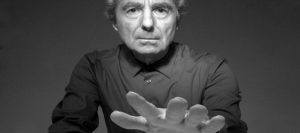Mark Lawson in New Statesman:
 The brutal truth of literary careers is that the reputation of most great writers would not have been affected – and might even have been improved – by earlier death. Philip Roth, though, is a very rare example of a front-rank author whose later work is also the greater work. If the obituaries of Roth had appeared in the mid-Eighties of the last century rather than his own mid-80s this week, then he would likely have been remembered as a writer whose best efforts had been, in two senses, devoted to self-exploration. That early oeuvre might easily have been dismissed as penis-waving – the masturbatory comic classic, Portnoy’s Complaint(1969) – giving way to navel-gazing, in the quartet of stories – from The Ghost Writer (1979) to The Prague Orgy (1985) – that playfully dramatised, via a fictional Jewish American novelist called Nathan Zuckerman, the deranging fame and accusations of anti-semitism that resulted from the novel about the furiously self-abusing young Jew, Alexander Portnoy, or, as he became in Zuckerman’s surrogate version, Carnovsky.
The brutal truth of literary careers is that the reputation of most great writers would not have been affected – and might even have been improved – by earlier death. Philip Roth, though, is a very rare example of a front-rank author whose later work is also the greater work. If the obituaries of Roth had appeared in the mid-Eighties of the last century rather than his own mid-80s this week, then he would likely have been remembered as a writer whose best efforts had been, in two senses, devoted to self-exploration. That early oeuvre might easily have been dismissed as penis-waving – the masturbatory comic classic, Portnoy’s Complaint(1969) – giving way to navel-gazing, in the quartet of stories – from The Ghost Writer (1979) to The Prague Orgy (1985) – that playfully dramatised, via a fictional Jewish American novelist called Nathan Zuckerman, the deranging fame and accusations of anti-semitism that resulted from the novel about the furiously self-abusing young Jew, Alexander Portnoy, or, as he became in Zuckerman’s surrogate version, Carnovsky.
But, in 1986, Roth began perhaps the most remarkable and redefining second and third acts of any writing life. The Counterlife, the fifth Zuckerman book, remained playful (characters can joltingly be alive, dead, then living again) but moved beyond the narrow focus of literary celebrity to tackle the Jewish experience in England, the Middle East and history. Two skilful memoirs – The Facts (1988) and Patrimony (1991) – also usefully established the extent to which the Zuckerman sequence, assumed to be autobiographical, was invented.
More here.
